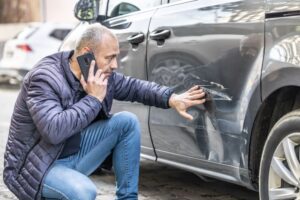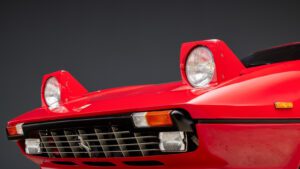Tested: How EPA EV Range Figures Compare with Reality

From the July/August 2023 issue of Car and Driver.
In 2016, we started measuring vehicles’ real-world highway fuel economy with a 200-mile out-and-back route driven at a steady 75 mph. As more EVs joined the party, this also became our highway range test, with the distance lengthened or shortened to use all the battery’s juice. A clear trend has emerged: Most EVs fall significantly short of their label’s range figure, while gas-powered vehicles tend to meet or exceed their EPA fuel-economy values. We used these results in a paper we co-authored for SAE International outlining EVs’ window-sticker-range shortfalls. And even the range from our test is ambitious, as that’s using 100 percent of the battery’s energy, which is all but impossible to do without stranding yourself. Also, charging speeds slow dramatically above about an 80 percent state of charge, so when you’re traveling greater distances than a single charge and juicing up on the road, it’s typically practical to charge only to 70 or 80 percent. We think it’s time for the EPA to employ a tougher methodology for setting EV range.
Infographic by Nicolas Rapp|Car and Driver
OVER/UNDER
The more than 350 gas- and diesel-powered vehicles we’ve tested have, on average, exceeded their label’s EPA highway fuel economy by 4 percent, while the roughly 60 EVs we’ve tested have fallen 13 percent short of the range figure on their window sticker. That’s a recipe for disappointing buyers switching from gas to electric.
APPLES AND ORANGES
Automakers can choose to test EVs using either a two- or five-cycle methodology. The vehicles that have their range figures boosted with five-cycle testing do far worse on our real-world route. For example, EVs from Porsche and Mercedes-Benz are the best performers and the only two brands whose vehicles consistently exceed their label values (by an average of 6 and 7 percent, respectively). Tesla employs some of the highest adjustment factors and produces the vehicles that underperform by the widest margin, with an average shortfall of 26 percent. At highway speeds, the actual range difference between a 405-mile Tesla Model S and a 242-mile Porsche Taycan is only about 40 miles, not the 163 miles the labels would have you believe. With gas-powered cars, we don’t see dramatic differences among automakers in real-world versus label fuel economy.
LABEL MAKER
Every EV has individual EPA city- and highway-range figures, but the only value displayed on the window sticker is a combined number, weighted 55 percent toward the city result, which is typically higher. Displaying the highway number, which averages 5 percent lower than the combined value, would help a little.

Director, Vehicle Testing
Dave VanderWerp has spent more than 20 years in the automotive industry, in varied roles from engineering to product consulting, and now leading Car and Driver’s vehicle-testing efforts. Dave got his very lucky start at C/D by happening to submit an unsolicited resume at just the right time to land a part-time road warrior job when he was a student at the University of Michigan, where he immediately became enthralled with the world of automotive journalism.




